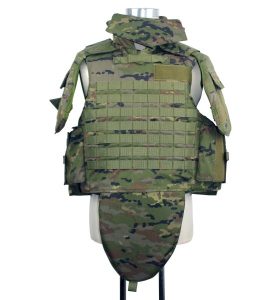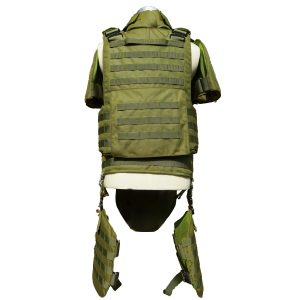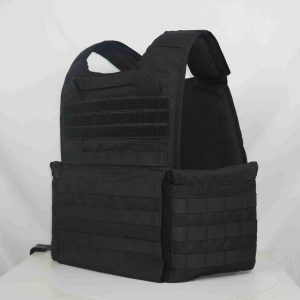Proper maintenance of a bulletproof vest is crucial for ensuring its effectiveness and longevity. Neglecting regular care can lead to compromised protection, putting the wearer at risk. The lifespan of a bulletproof vest typically spans around five years, but proper upkeep can extend its durability. For instance, keeping the vest dry and out of the sun helps maintain its integrity. This blog aims to provide actionable tips on bulletproof vest maintenance. Follow these guidelines to ensure optimal performance and safety.
Importance of Proper Maintenance
Proper maintenance of a bulletproof vest ensures its effectiveness and longevity. Regular care prevents the deterioration of materials and maintains performance reliability. Neglecting maintenance can lead to compromised protection, which endangers the wearer.
Ensuring Longevity
Material Integrity
Maintaining the material integrity of a bulletproof vest is crucial. Regular inspection helps identify any signs of wear and tear. Cleaning the vest with a damp sponge or soft cloth using cold water removes dirt and contaminants. Avoid using harsh chemicals or machine washing, as these can damage the vest’s materials. Air-drying the panels flat prevents folding or creasing, which can compromise the vest’s structure.
Performance Reliability
Performance reliability depends on the proper upkeep of the vest. Hand-washing the outer panel cover in warm or cold water with a sponge or soft cloth ensures the removal of sweat and odor. This practice enhances the vest’s effectiveness. Proper storage, such as avoiding extreme temperatures and using a vest carrier, also contributes to maintaining performance reliability.
Safety Considerations
Protection Levels
Regular maintenance ensures that the bulletproof vest maintains its protection levels. Inspecting the vest for any damage or wear helps identify potential issues that could compromise safety. Following the manufacturer’s instructions for care and cleaning is essential to preserve the vest’s protective capabilities.
Wear and Tear
Wear and tear can affect the safety of a bulletproof vest. Regularly checking for signs of damage, such as tears or fraying, helps address issues before they become severe. Proper storage and handling prevent unnecessary wear and tear, extending the vest’s lifespan and ensuring optimal protection.
Do’s of Bulletproof Vest Maintenance
Regular Inspection
Checking for Damage
Regular inspection of a bulletproof vest ensures its effectiveness. Examine the vest for any visible signs of damage. Look for tears, fraying, or other wear and tear. Identifying issues early prevents further deterioration. Addressing damage promptly maintains the vest’s protective capabilities.
Assessing Fit and Comfort
Proper fit and comfort are essential for optimal protection. Wear the vest and assess its fit. Ensure that the vest covers all vital areas without restricting movement. Adjust straps and fastenings as needed. A well-fitted vest enhances both safety and comfort.
Cleaning Guidelines
Hand Washing
Hand washing is the recommended method for cleaning your ballistic vest. Remove the ballistic panels before washing the carrier. Use a sponge or soft cloth with warm or cold water. Avoid using harsh chemicals or bleach. Gentle cleaning preserves the material integrity of the vest.
Drying Techniques
Proper drying techniques prevent damage to the vest. Air-dry the panels flat to avoid folding or creasing. Do not use electric dryers or expose the vest to direct sunlight. Ensure that the panels are completely dry before reinserting them into the carrier.
Proper Storage
Avoiding Extreme Temperatures
Store the bulletproof vest in a cool, dry place. Avoid exposing the vest to extreme temperatures. High heat or freezing conditions can degrade the materials. Maintaining a stable storage environment preserves the vest’s longevity.
Using a Vest Carrier
A vest carrier provides additional protection during storage. Use a carrier to store the vest when not in use. This practice prevents unnecessary wear and tear. A carrier also helps maintain the vest’s shape and structure.
Don’ts of Bulletproof Vest Maintenance
Avoiding Common Mistakes
Using Harsh Chemicals
Avoid using harsh chemicals when cleaning a bulletproof vest. These substances can degrade the materials and compromise the vest’s protective capabilities. Use a damp sponge or soft cloth with cold water for cleaning. This method preserves the material integrity and ensures the vest remains effective.
Machine Washing
Do not machine wash a bulletproof vest. The mechanical action can damage the ballistic panels and reduce their effectiveness. Always hand-wash the outer panel cover with a sponge or soft cloth. This approach maintains the vest’s structure and performance reliability.
Misuse and Mishandling
Improper Storage
Improper storage can significantly impact the lifespan of a bulletproof vest. Avoid placing heavy objects on top of the vest, as this can cause unexpected damages. Store the vest in a cool, dry place to prevent exposure to extreme temperatures. High heat or freezing conditions can degrade the materials and compromise the vest’s integrity.
Ignoring Manufacturer Instructions
Ignoring manufacturer instructions can lead to improper maintenance and reduced effectiveness. Always follow the care and cleaning guidelines provided by the manufacturer. This practice ensures that the vest maintains its protective capabilities and extends its lifespan. Regularly check for any updates or additional recommendations from the manufacturer to keep the vest in optimal condition.
Proper bulletproof vest maintenance ensures optimal performance and longevity. Regular inspection and cleaning keep the vest in good condition. Following care instructions from the manufacturer is crucial. Regularly check for damage and wear to maintain protection levels. Proper storage practices help prolong the life of the vest. Ensuring personal safety through proper care is essential. Continue reading to stay informed about best practices.



